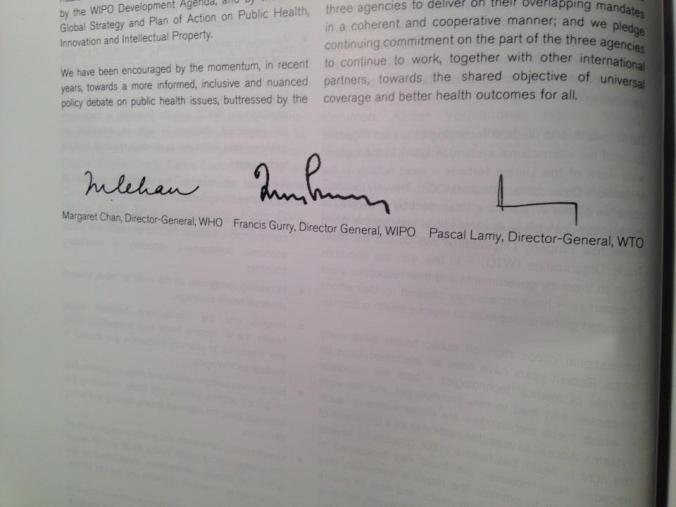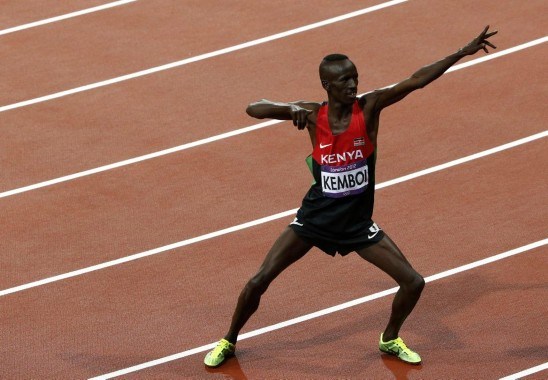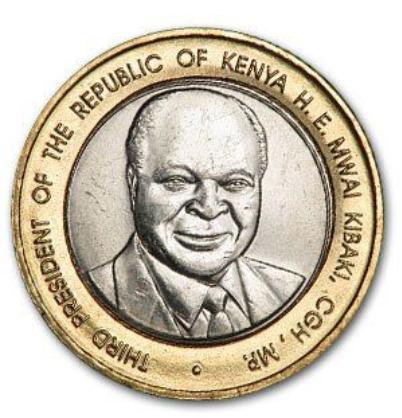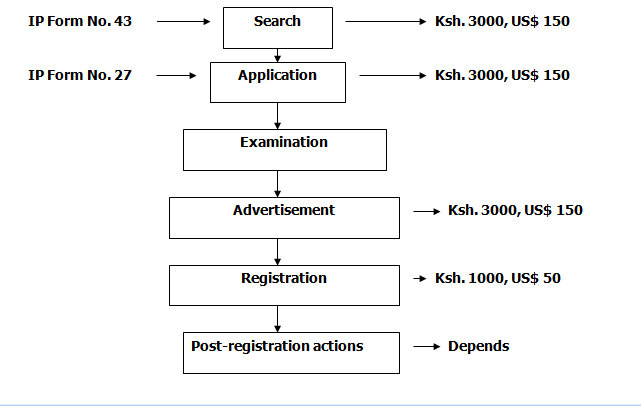
Summary:
In a judgment delivered on 23 August 2012 by Judge Griesel (Fortuin & Samela JJ concurring), the High Court of South Africa in the case of Voor-Groenberg Nursery CC and Another v Colors Fruit South Africa (Pty) Ltd [2012] has set an important precedent on the standard of proof of ownership of vegetative materials which are the object of intellectual property rights.
Legal Background
After Industrial Property and Copyright, Plant Breeders Rights is the third branch of intellectual property rights. This young branch of IP was born out of the UPOV Convention of 1961. UPOV stands for “Union internationale pour la protection des obtentions végétales”.
The Convention protects the variety of the plant not the plant itself therefore the subject matter of protection is the variety and not the whole plant. A variety is a new plant that is distinct from any other variety that is known to agriculture or published in any botanical literature. A variety is ‘known to agriculture’ if man has cultivated it. A variety is ‘known to botanical literature’ if it has not been recorded. Therefore any person who discovers a new plant variety that is wild, that man can use or domesticate, can apply to the competent authority for a Grant of a Plant Breeder’s Right.
The UPOV Convention 1961 was subsequently amended in 1978 and 1991. Kenya was the first country in Africa to domesticate the UPOV Convention. Kenya’s Seed and Plant Varieties Act Chapter 326 is modeled on UPOV 1961. South Africa’s Plant Breeders’ Rights Act 1976 is modeled on UPOV 1978.
Factual scenario in the case of Voor-Groenberg Nursery CC v Colors Fruit South Africa
Sheehan Genetics LLC (‘Sheehan Genetics’), a California-based company, developed ten different varieties of seedless grapes. Sheehan Genetics then entered into a licence agreement with a Spanish company, Antonio Munoz Y Cia SA (‘AMC’), in terms of which AMC was granted an exclusive licence to test and commercially develop all new plant material bred, acquired and developed by Sheehan Genetics. Later on,
Sheehan Genetics and AMC entered into a sub-licence agreement with Colors Fruit South Africa Pty Ltd. In terms of the sub-licence Colors was granted certain rights regarding the exploitation of the so-called “Sheehan varieties” in South Africa and Namibia.
The rights are set out in paragraph 5 of the judgment as follows:
” (a) an exclusive right (to the exclusion of both AMC and any third party) ‘to obtain from AMC … all the propagating samples of all new vegetative material bred and/or developed by Sheehan Genetics and received by AMC from time to time, so that Colors Fruit may (i) test, plant and cultivate them; (ii) obtain their products; and (iii) secure their statutory protection’ in the form of registration of plant breeders’ rights in the name of Sheehan Genetics within the defined territory (‘Planting and Cultivation Rights’); and
(b) a non-exclusive right to use the intellectual property rights of which Sheehan Genetics was the proprietor, to market and distribute the products in the agreed distribution territory (‘Marketing and Distribution Sub-Licence’).”
In terms of the sub-licence agreement, Colors was appointed as Sheehan Genetics’ South African agents in connection with matters relating to plant breeders’ rights, governed locally by the Plant Breeders’ Rights Act, 15 of 1976 (‘the Act’). To this end, Colors contracted the services of Voor-Groenberg, a local entity, to propagate and multiply the plant material obtained by it [Colors].
Things went south when AMC notified both Sheehan and Colors of its intention to terminate the licenses described above. Despite this notice of termination of the license, Colors took the view that it would not terminate any of its production or cultivation programs; and further that it would not surrender any of its rights in respect of the plant materials. Why? Well, Colors claimed it had acquired ownership of the Sheehan plant varieties! How? Colors made two separate arguments:
1. Colors argued that the sub-licence did not contain a reservation of ownership in favour of Sheehan Genetics or AMC. This fact, together with supply of the plant material to Colors, can lead only to the conclusion that the intention must have been for Colors to become owner.
2. Colors relied on the provisions of s 23(6) of the Plant Breeders’ Rights Act.
The High Court rightly dismissed Color’s ownership claim on both these grounds. The Court rightly dismisses Colors’ first argument at paragraphs 22, 23 and 24. However for purposes of this post, we shall focus on the second argument because it is directly pertinent to our discussion on intellectual property rights.
The point of departure is section 23 of the South African Plant Breeders’ Rights Act which states the holder of plant breeder’s right has certain exclusive rights in respect to the propagating material of the relevant variety; or harvested material, including plants, which was obtained through the unauthorized use of propagating material of the relevant variety. These include:
(a) production or reproduction (multiplication);
(b) conditioning for the purpose of propagation;
(c) sale or any other form of marketing;
(d) exporting;
(e) importing;
(f) stocking for any of the purposes referred to in paragraphs (a) to (e).
This section provides that any person exercising any of the above rights must have proof of prior authority from the rights holder in the form of a license.
It is clear from the above facts that Colors had obtained such a license however in the absence of any proof of assignment of rights from Sheehan, could Colors claim to be the holder of plant breeder’s rights in respect of the Sheehan variety? The answer is an emphatic ‘No’. Therefore Colors cunningly decided to rely on the exceptions provided in section 23(6) of the Plant Breeders’ Act to claim it had acquired the rights to use the plant varieties. This section provides that:
“a person who procured any propagating material of a variety in a legitimate manner shall not infringe the plant breeder’s right in respect of the variety if he or she—
(a) resells that propagating material;
(b) subject to the provisions of subsection (2), sells any plant, reproductive material or product derived from that propagating material for purposes other than the further propagation or multiplication thereof;
(c) uses or multiplies that propagating material in the development of a different variety;
(d) uses that propagating material for purposes of bona fide research;
(e) uses that propagating material for private or non-commercial purposes; or
(f) is a farmer who on land occupied by him or her uses harvested material obtained on such land from that propagating material for purposes of propagation: Provided that harvested material obtained from the replanted propagating material shall not be used for purposes of propagation by any person other than that farmer.”
To my mind, this section is akin to the exceptions and limitations provision in section 23 of the Copyright Act commonly known as the ‘fair dealing’ or ‘fair use’ provisions. However, in the case of copyright as is the case for plant breeders’ rights, such provisions can only be relied on as defences where there is an allegation of infringement of rights. The court makes a similar observations at paragraph 29:
“reading s 23(6) in context, it provides a defence – not a cause of action – to a limited class of persons, namely persons without a licence obtained under s 25 or 27, who are accused of infringing a plant breeder’s right. Like estoppel, therefore, s 23(6) is meant to be utilised as a shield, not as a sword.”
These exceptions are sometimes referred to as the “farmer’s privilege” as contemplated in UPOV 1978 and were part of a larger campaign to obtain international recognition of plant breeders’ rights which was finally realised in 1994 with article 27(3) (b) of the TRIPS Agreement.
Conclusion:
The High Court’s findings in this case are spot on in upholding the intellectual property rights of the plant breeder over any other competing interests. In the present case, the object of the plant breeder’s right is the plant variety including related propagating material and harvested material. One cannot claim ownership of the vegetative material of a particular plant variety if one is not recognised by law as the holder of the plant breeder’s right.
















